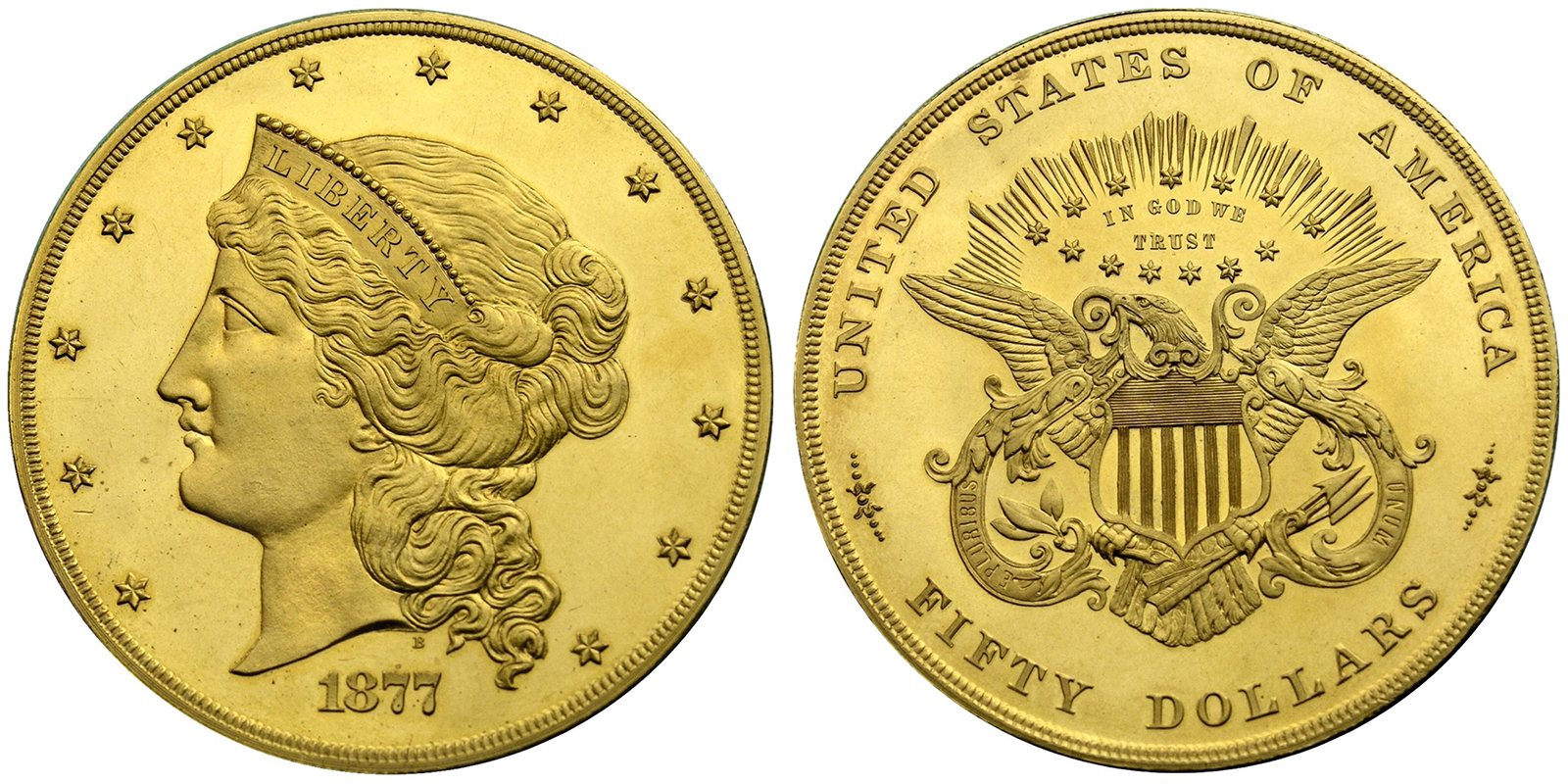There have been hundreds of different coins concepted and struck by the U.S. Mint over the centuries, whether to serve as a means of legal tender or simply as items of commemoration. From the American Eagle Proof coins to the Eisenhower silver dollar and beyond, U.S. history is rich with rare and unique coins – many of which are still highly sought after as collectible items today.
As extensive as the history of American coinage is, perhaps the most mysterious and legendary piece is the now often forgotten half union 50-dollar gold coin. The half union – while never having been released into circulation – is still often thought of as one of the most significant and well-known pattern coins in the history of the U.S. Mint.
Here is a closer look at the story behind the half union that makes it one of the more iconic coins in our nation’s history.
Birth in the old west
The half union was a proposed gold coin denomination that resulted in the production of two patterns that remain the largest gold coins ever struck by the U.S. government.
The story begins in 1854, when California Senator William Gwin introduced a bill that included the proposal for the half union. The primary goal of the coin and its larger denomination was to help merchants and banks in the American west transfer large sums of money more easily and efficiently.
At the time, the west had become flooded with settlers and economic growth in the wake of the gold rush of 1849, but the region’s infrastructure was simply not prepared to handle such rapid expansion. This included the very concept of legal tender, as paper money was largely untrusted and unreliable in these new towns that seemingly popped up overnight. The west was also short of gold coinage, and the proposal of the half union was thought to provide a much-needed solution to these issues.
A new branch of the U.S. Mint was established in San Francisco in 1854, which provided additional rationale behind the proposal. While the bill passed in the Senate, it was ultimately rejected by the House of Representatives and deemed a purely regional issue that was unimportant to the political and economic interests of the eastern states – where the vast majority of American wealth and economic standing resided.
While the half union was shot down by American lawmakers, the private San Francisco firm of Wass, Molitor & Co. still struck large numbers of 50-dollar gold pieces in 1855 to serve the same purpose.
Philadelphia revival
In 1877 – over 20 years after the initial proposal – the idea of the half union reemerged, this time back east where it could hopefully gain more traction. That year, the half union patterns were struck at the Philadelphia Mint by director Henry Linderman. By this time, paper money was much more widely available and the need for a larger denomination of coin was almost nonexistent. But none of this stopped Linderman, who was said to have taken to the half union as somewhat of a personal pet project.
Under Linderman’s direction, just two pattern coins – trial strikes of proposed new designs – were made of the 50-dollar half union. Designed by Chief Engraver William Barber, the coin featured Liberty on the obverse and was a slightly modified version of the 20-dollar “Liberty Head” Double Eagle designed by James B. Longacre decades earlier.
The half union was designed to weigh roughly 2.5 ounces and to be made of solid gold. If it had been made for circulation to the general public, the half union would have been the highest-valued gold coin ever made at the time, with a whopping face value of $50. Today, that equates to over $4,000, all in one coin.
The trial strikes produced in 1877 belong to the Smithsonian today, and no others are known to exist. The coin did resurface as a $50 commemorative piece released in 1915, however. Some of the commemorative half unions were octagonal, marking the first and only time the U.S. Mint released a coin that was not round.
Learn more about your rare and collectible coins with help from Gold Guys
While the half union may have never made it into circulation, it still represents one of the more noteworthy stories in the history of the United States Mint.
If you have been holding onto other coins you would like to sell or are simply curious about their worth, the dedicated and experienced team of experts at Gold Guys is here to help. We bring unmatched industry knowledge to the table to help our customers know what their pieces are worth and, if desired, help them sell them for a great price, smoothly and successfully.
In addition to buying rare and collectible coins, we also buy bullion, dental scrap, jewelry, diamonds, sterling silverware, and many other items in gold, silver, platinum, and more. We’re proud to have received an A+ rating from the Better Business Bureau, speaking to the dedication and level of service we provide to each and every customer.
Request your mail-in kit today to receive a free, no-obligation offer for your coins, precious metals, and diamonds.

